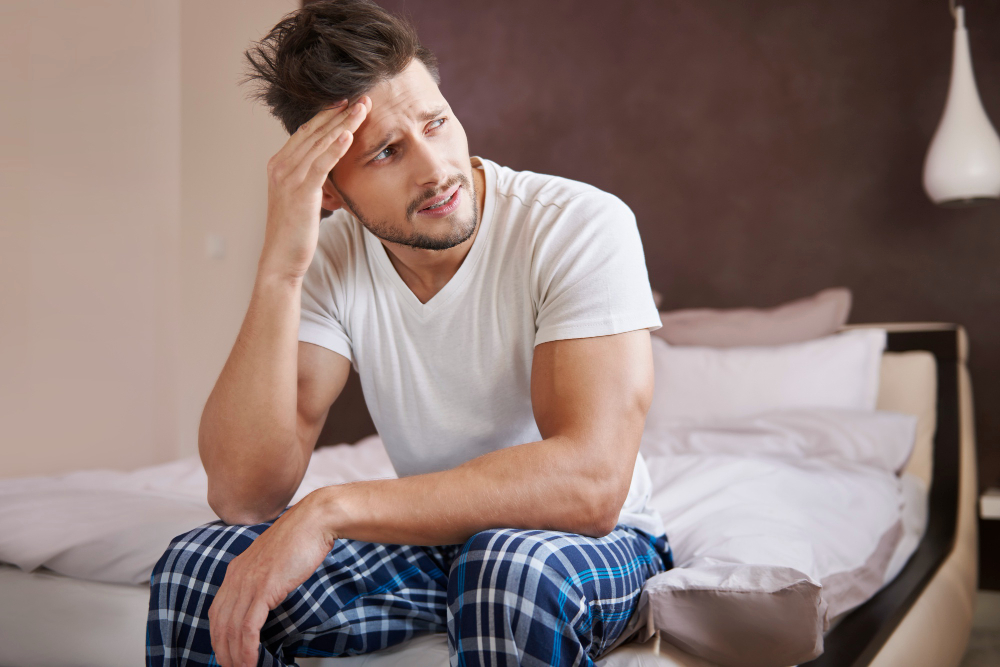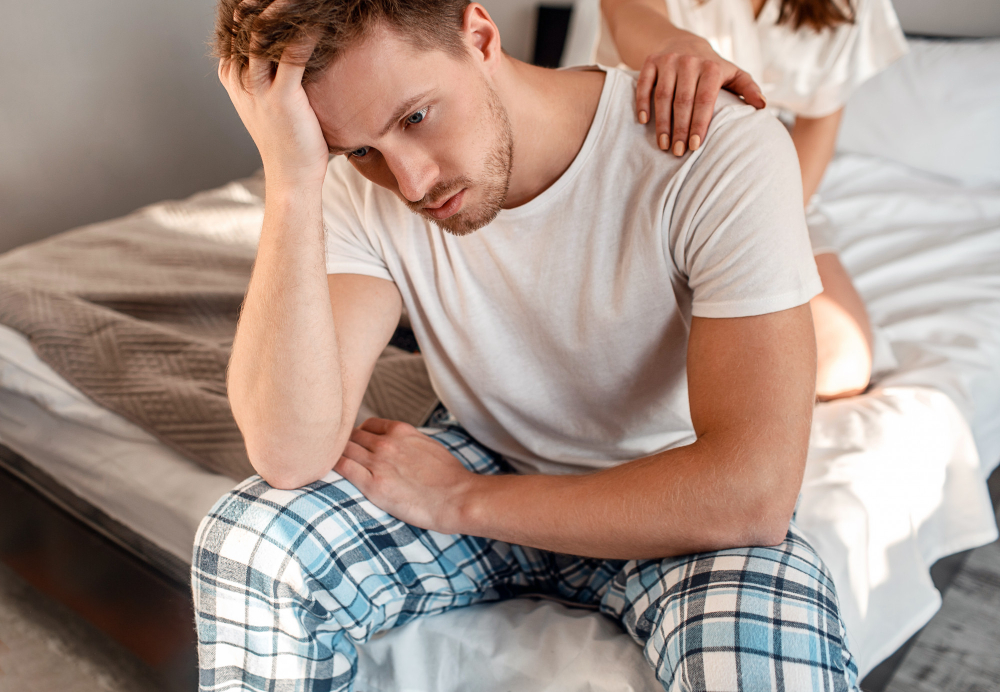
Male voiding dysfunction refers to the inability to effectively empty the bladder, often due to a miscommunication between the bladder muscles and the urethra. Under normal conditions, the bladder muscle (detrusor) contracts while the urethra relaxes and opens, allowing urine to flow out of the body. In cases of voiding dysfunction, this coordination is disrupted, causing incomplete bladder emptying or even complete urinary retention. For many men, voiding dysfunction can lead to a range of uncomfortable symptoms and, if left untreated, may result in complications affecting overall urinary health.
According to the National Institute of Diabetes and Digestive and Kidney Diseases (NIDDK), voiding dysfunction can have multiple underlying causes, including anatomical obstructions, muscle weakness, and neurological disorders. The severity of the condition varies from mild difficulty in urination to complete urinary retention, with symptoms and treatment needs that differ for each individual.
Causes of Male Voiding Dysfunction
There are several potential causes for voiding dysfunction, ranging from anatomical obstructions to neurological issues. Understanding these causes is essential for effective treatment planning.
1. Obstructions in the Urinary Tract
- Benign Prostatic Hyperplasia (BPH): An enlarged prostate is one of the most common causes of voiding dysfunction in men over 50. As the prostate enlarges, it can compress the urethra, leading to a reduced urine flow or complete obstruction. BPH is a common, non-cancerous condition that affects nearly half of men over the age of 60, according to the Centers for Disease Control and Prevention (CDC).
- Bladder Stones: Bladder stones can form when urine sits in the bladder for extended periods. These stones can block urine flow or irritate the bladder lining, resulting in difficulty voiding and discomfort. Bladder stones are often a secondary result of other voiding issues, such as BPH or urinary retention.
- Urethral Strictures: Scar tissue in the urethra can cause a narrowing (stricture) that restricts urine flow. Strictures can be due to trauma, infections, or medical procedures affecting the urethra. Men who have experienced catheter use or urological surgery are at a higher risk of developing strictures.
- Prostatitis: Prostatitis, or inflammation of the prostate gland, can also lead to voiding dysfunction. This condition, which can be bacterial or non-bacterial, causes swelling and pain, often affecting the bladder and urethra’s functionality. More information on prostatitis can be found through the NIDDK.
2. Neurological Disorders and Muscle Dysfunction
Neurological conditions can disrupt the communication between the brain, bladder, and urethra, resulting in poor bladder control or emptying.
- Neurogenic Bladder: A neurogenic bladder occurs when nerve damage prevents proper bladder control. Conditions like spinal cord injuries, multiple sclerosis, Parkinson’s disease, and diabetes can affect bladder nerve signaling, leading to either overactive bladder or voiding dysfunction.
- Dysfunctional Detrusor Muscle: In some cases, the detrusor muscle may be weak or uncoordinated, leading to insufficient bladder contraction and incomplete voiding. Conditions such as diabetes or chronic bladder overdistention can contribute to detrusor muscle dysfunction.
- Psychological Factors: Emotional stress, anxiety, or trauma can contribute to voiding dysfunction in some men. Anxiety may cause involuntary contraction of the pelvic floor muscles, making urination difficult. Cognitive-behavioral therapy and relaxation techniques can help in managing these psychological factors.
Symptoms of Male Voiding Dysfunction
The symptoms of voiding dysfunction can range from mild inconvenience to severe discomfort, depending on the extent of bladder and urethral involvement. Common symptoms include:
- Difficulty Starting Urination: Many men with voiding dysfunction experience hesitation or straining to start urination. This delay is often due to poor communication between the bladder muscle and the urethra.
- Weak Urine Stream: A slow or weak flow is a hallmark symptom of voiding dysfunction, often resulting from obstruction or detrusor muscle weakness.
- Incomplete Bladder Emptying: A sensation of fullness or the need to urinate again shortly after voiding is common. This feeling occurs when the bladder cannot fully empty, which can increase the risk of infection and discomfort.
- Post-Void Dribbling: Leakage of urine after completing urination, known as post-void dribbling, is often due to weak pelvic floor muscles or urethral obstruction.
- Frequent Urination: Increased urgency and frequency, particularly at night (nocturia), can also be symptoms of voiding dysfunction.
For more information on symptoms and support for urinary issues, visit the National Institutes of Health (NIH).
Diagnosing Male Voiding Dysfunction
Diagnosing voiding dysfunction is crucial for determining the most appropriate treatment. Physicians use a combination of patient history, physical exams, and diagnostic tests to evaluate the underlying causes.
- Medical History and Physical Examination: A thorough medical history helps identify potential risk factors or underlying conditions contributing to voiding dysfunction, such as diabetes, neurological disorders, or previous surgeries.
- Urinalysis and Urine Culture: Testing urine for infection, blood, or abnormal cells helps rule out urinary tract infections (UTIs) or other conditions that may be causing voiding issues.
- Post-Void Residual (PVR) Test: A PVR test measures the amount of urine left in the bladder after urination using an ultrasound. High PVR levels indicate incomplete bladder emptying, which can guide further diagnosis.
- Urodynamic Testing: Urodynamic studies assess bladder pressure, flow rates, and muscle function during urination. These tests provide valuable insights into how well the bladder and urethra are working together.
- Cystoscopy: A cystoscope, a thin tube with a camera, is inserted into the urethra to visually inspect the urethra and bladder. This test is particularly useful for identifying strictures, bladder stones, or signs of prostate enlargement.
- Voiding Cystourethrogram (VCUG): A VCUG is an X-ray imaging test that shows the bladder and urethra’s structure while urinating. It can reveal any blockages or abnormalities affecting urine flow.
Treatment Options for Male Voiding Dysfunction
The treatment for male voiding dysfunction depends on the severity of symptoms, the underlying cause, and the patient’s overall health. Options range from lifestyle changes and medications to surgical interventions in more advanced cases.
1. Lifestyle Modifications
In mild cases, lifestyle adjustments can help manage voiding dysfunction symptoms.
- Fluid Management: Reducing fluid intake before bed can help manage nocturia. Avoiding bladder irritants such as caffeine, alcohol, and spicy foods can also reduce urinary urgency.
- Bladder Training: Bladder training exercises, such as scheduled voiding, can help improve bladder control and reduce frequency. Over time, this technique helps extend the interval between bathroom visits, reducing the feeling of urgency.
- Pelvic Floor Exercises: Pelvic floor exercises (Kegels) can strengthen the muscles supporting the bladder and urethra, improving voiding efficiency. For guidance on performing Kegels, visit the NIDDK.
2. Medications
Several medications are available to help manage voiding dysfunction symptoms, particularly when caused by conditions like BPH.
- Alpha-Blockers: Medications such as tamsulosin and alfuzosin relax the muscles of the bladder neck and prostate, easing urine flow. Alpha-blockers are effective for men with an enlarged prostate.
- 5-Alpha Reductase Inhibitors: Drugs like finasteride and dutasteride reduce prostate size by blocking the production of certain hormones. They are especially beneficial for men with moderate to severe BPH.
- Anticholinergics: For men with overactive bladder symptoms, anticholinergic drugs can relax bladder muscles and reduce urgency. However, these drugs are used cautiously as they can worsen urinary retention.
3. Minimally Invasive Procedures
When medications alone do not relieve symptoms, minimally invasive procedures are available.
- UroLift System: The UroLift procedure uses small implants to hold the prostate lobes apart, relieving obstruction without removing tissue. This is a non-invasive procedure often effective for treating BPH-related obstruction.
- Transurethral Microwave Therapy (TUMT): TUMT uses microwave energy to shrink prostate tissue, relieving pressure on the urethra.
- Transurethral Needle Ablation (TUNA): This procedure uses radiofrequency energy to destroy small amounts of prostate tissue, reducing obstruction. TUNA is often an option for men seeking an alternative to surgery.
4. Surgical Treatments
In severe cases of voiding dysfunction, surgical interventions may be necessary. Common procedures include:
- Transurethral Resection of the Prostate (TURP): TURP is a surgical procedure to remove parts of the prostate tissue obstructing urine flow. It’s one of the most common treatments for men with moderate to severe BPH.
- Holmium Laser Enucleation of the Prostate (HoLEP): HoLEP uses a laser to remove excess prostate tissue, providing a lasting solution for BPH-related voiding issues.
- Prostatectomy: In rare cases, a full prostatectomy may be required, particularly if other treatments have failed or if prostate cancer is a concern. This procedure involves removing the entire prostate gland.
For more information on treatments and medications related to voiding dysfunction, refer to the FDA.
Managing and Coping with Male Voiding Dysfunction
Living with voiding dysfunction can be challenging, but effective management and treatment options are available. Tips for managing the condition include:
- Follow-Up Care: Regular follow-ups with a healthcare provider are essential to monitor progress and adjust treatment as needed.
- Mental Health Support: Chronic voiding dysfunction can affect mental well-being, leading to stress or depression. Seeking support from mental health professionals or joining support groups can provide emotional assistance.
- Education and Awareness: Understanding voiding dysfunction and its management options empowers patients to take an active role in their treatment plan.
Conclusion
Male voiding dysfunction is a common yet manageable condition that can affect urinary health and quality of life. With proper diagnosis and a tailored treatment plan, most men can achieve symptom relief and improve their daily functioning. As research continues to uncover new insights, the options for managing and treating voiding dysfunction will only improve, offering hope for those affected by this condition.




